For Living Edge, B-Corp certification was the next appropriate step in a long journey focused on building a truly sustainable and socially responsible business. In 2023 they achieved certification at their first pass, giving customers a new level of environmental assurance and the company an important milestone to celebrate across two decades of staff-led, sector-leading sustainability practices.

July 28th, 2023
It’s estimated that there are 330 million companies in the world. Of those, around 6,000 have B-Corp certification. Of those, around 600 are headquartered in Australia. Of those, 7 are furniture businesses. Finally, of those, Living Edge is the only multi-brand furniture supplier that caters to the A&D industry.
In a world flooded with greenwashing and performance stars seemingly achievable for the most fleeting of sustainable efforts, B-Corp stands out for its rigour and holistic assessment approach. You might have a fully-recyclable product but if you aren’t, for example, looking after your employee’s wellbeing or can’t track the provenance of your materials – please do not apply.
For Living Edge this presented no problem. They launched LivingOn In 2008, the company’s award-winning sustainability program, and the values enshrined therein have shaped the way the business has grown to the point where it is acknowledged as setting the Australian benchmark for the sector.
Achievements have included: being the first Herman Miller dealer globally to quantify and offset the freight emissions generated from importing in 2009; having carbon neutral operations since 2017 by quantifying Scope 1, 2, and 3 emissions and offsetting them where needed through the purchase of Verified Carbon Standard carbon credits; being able to recycle 69% of the waste generated across operations in 2022; and as a signatory to the Australian Packaging Covenant, introducing new 100% recyclable shipping cartons.
But the journey, however, started much earlier and from an outsider’s observation about Australian attitudes to waste – and design.

Aidan Mawhinney is the affable and articulate leader of Living Edge, and when he first arrived in Australia more than 20 years ago, he thought he was witnessing the early potential of what we now know as the ‘circular economy’.
“I was quite amazed when I first moved to Australia, that on council clean-up days, people would leave furniture out on the street and it would be picked up by other people to be used,’ says Mawhinney. “I thought it was an amazing thing, obviously something I hadn’t seen in the UK because the weather would wreck it in two minutes. But in Australia, people were taking advantage of this ability to drive around, find quality furniture and pick it up to reuse it themselves.
“It always really intrigued me, but then as the years went past, we saw more and more, in inverted commas, ‘designer furniture’, substandard replica stuff, that wasn’t able to last long. Items that were thrown aside because they were already falling apart. I started looking at those companies and thinking, ‘How can they do that, I mean, how they can just create landfill?’ So, from a personal point of view I was thinking, ‘If you’ve got the luxury of being in charge of the company, and you put profit first over everything’ – that is not a value of mine at all.”


Back in the noughties that mentality still was still a bit fringe, and in Mawhinney’s own words “you can’t make people be sustainably minded”. However, even from those early days, similar questions were surfacing quite quickly as an internal discussion point amongst the team. The issue was quickly embraced from there on as an inherent value, and the ‘furniture for life’ motto was adopted. Fast forward to today and the company now employs a full-time sustainability manager, Guy Walsh, who managed the B-Corp certification process and who says customers have never been more knowledgeable or concerned about the impact of their buying power.
“I think the more information you can give to consumers, the more considerate they can be in their purchasing decisions,” says Walsh. “From our point of view as a business, the more likely they are going to purchase from us because we provided them with all that information, transparently. [B-Corp] is all about reassurance – that an objective third party has come in and looked at the claims made and have verified them and have said, yes, these guys really are doing what they say they’re doing.”
B-Corp certification is basically a 2-step process. Applicants first self-assess their performance against the B-Impact Assessment (BIA), which consists of over 200 questions across five impact categories: environment, community, customers, workers and governance. This preliminary exercise gives organisations a strong idea for where they might need to strengthen their approach, and then they can compare and review their performance against B-Corp best practice and start to improve their operations through customised improvement reports and guides.

Once an applicant reaches over 80 points, they can submit for the formal verification process, whereupon B-Lab (the non-profit network responsible for certifying B Corps) steps in to test every single measure on the BIA and applicants need to point to tangible evidence to back up their initial claims, such as how they have calculated the quantum of different materials recycled annually and the documentation to support those figures. This process can take up to a year, and once awarded, organisations are re-assessed every three years. That initial score – and subsequent scores – are all included on their B-Corp register. Walsh says this transparent legacy information is incredibly important and points to the ongoing evolution of a company.
“One of the things that B Corp say, and I one hundred percent agree with, is that achieving certification isn’t the end of the journey, it’s actually the start,” says Walsh. “They’re saying ‘Yeah, okay, so you’re validating everything you’ve done today, which is valuable, you’re on the right track. But here are the opportunities for improvement.’”
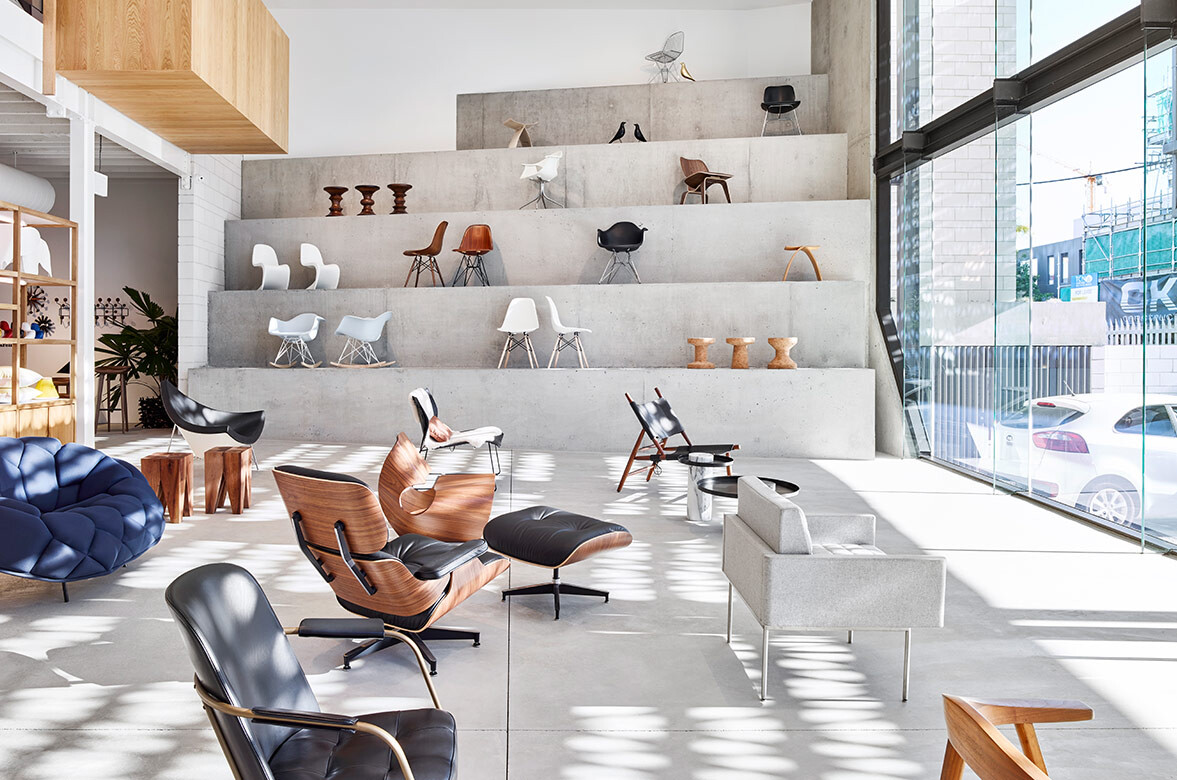
Walsh says that in business dealings with corporate clients sustainability requirements are often focused on ISO standards for individual impact areas rather than a ‘whole-of-sustainability’ analysis. But with embodied energy and modern slavery becoming a flashpoint for the A&D industry, combined with Mawhinney’s anecdotal feedback around the significant support he has received from executives in the industry through less formal channels, it’s probable that at some point in the near future those values and procurement check boxes will converge. And B-Corp may well be the easily identifiable standard by which to judge a supplier. Joining the B-Corp global community of businesses that meet high standards of social and environmental impact marks the next step in Living Edge’s sustainability evolution, but it won’t be the last. Underpinning that ethos is the idea that design longevity and quality production is the first step in ensuring a piece of furniture will be handed on to avoid landfill.
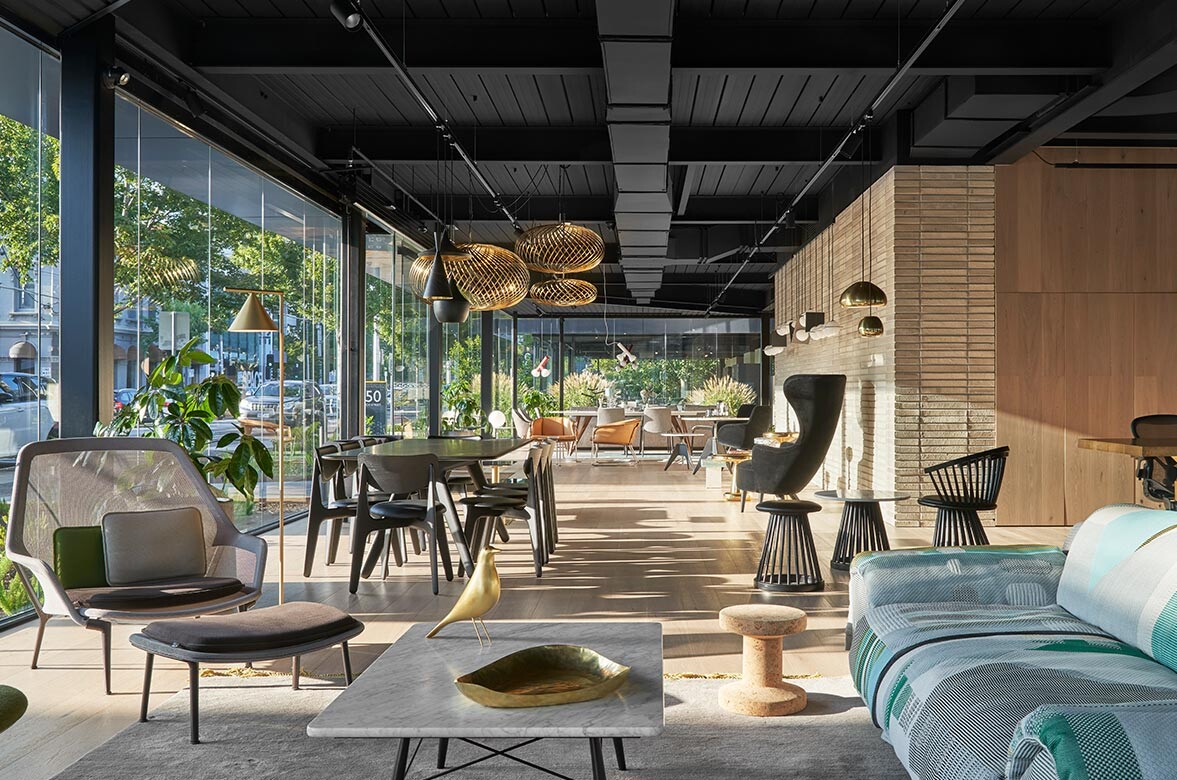
We think you might also like this story about Sydney’s Edition Gallery by Living Edge.
INDESIGN is on instagram
Follow @indesignlive
A searchable and comprehensive guide for specifying leading products and their suppliers
Keep up to date with the latest and greatest from our industry BFF's!

A curated exhibition in Frederiksstaden captures the spirit of Australian design

A longstanding partnership turns a historic city into a hub for emerging talent

On 6th September, Saturday Indesign lit up Melbourne with a day of immersive installations, design talks and showroom activations across three thrilling precincts.
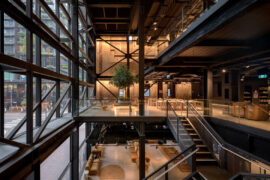
Tzannes has completed work at The Brewery in Sydney’s Central Park, marking the culmination of an internationally significant adaptive reuse project.
The internet never sleeps! Here's the stuff you might have missed
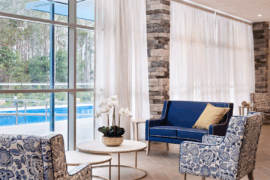
Inspired by an unthinkable design challenge on Sydney Harbour, Materialised’s ingenuity didn’t just fuse acoustic performance with transparent finesse – it forever reimagined commercial curtain textiles by making the impossible possible.
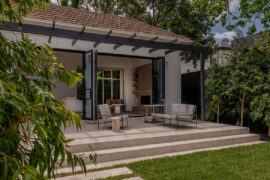
Through experience and with a passion for great design, Biasol is making gentle and perfect waves on the landscape of design.